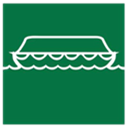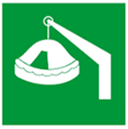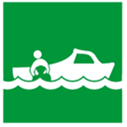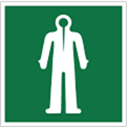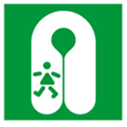1.5 Common IMO Safety Signs and Symbols
Module 1.5 Common IMO Safety Signs and Symbols
|
|
Assembly Station or Muster station A designated area on a ship where crew and passengers gather in an emergency. |
|
|
Lifeboat A motorized life-saving appliance designed to carry a specific number of people. |

|
A non-powered, inflatable life-saving appliance designed to carry a smaller number of people. |
|
|
|
|
|
Rescue boat A smaller boat used by the crew to gather life rafts or recover people who have fallen overboard. |
|
|
Rocket parachute flare A pyrotechnic device used for signaling distress. |

|
An individual life-saving appliance distributed throughout the vessel and to be thrown overboard in the event of a person falling into the sea |

|
Lifebuoy with line |

|
Lifebuoy with light A lifebuoy equipped with a light that automatically activates when it is thrown overboard. |

|
Lifebuoy with light and smoke A lifebuoy equipped with both a light and a smoke signal. |

|
Embarkation ladder A ladder used to board lifeboats or life rafts from a ship. |
|
|
Survival clothing Clothing designed to protect individuals from the elements, such as cold and wet conditions. The insulation of an immersion suit should ensure the body temperature does not drop more than 2°C after 6 hours in seas of between 0 and 2°C. |

|
Anti-exposure suit A type of survival clothing designed to protect individuals from hypothermia. |

|
A personal flotation device (PFD) designed to keep individuals afloat. |
|
|
Child Lifejacket A lifejacket designed for children. Must be suitable for children weighing between 15 and 40 kilograms. Must have a buoyancy of at least 50 newtons (5 kgf) when fully inflated. |

|
Infant Lifejacket A lifejacket designed for infants. Must be suitable for infants weighing less than 15 kilograms. Must have a buoyancy of at least 50 newtons (5 kgf) when fully inflated. |
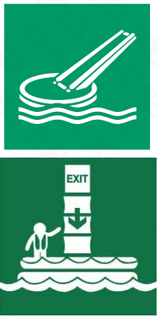 |
Marine Evacuation Slide A slide used to evacuate people from a ship in an emergency. Marine Evacuation chute Emergency escape device used on ships to allow rapid evacuation of passengers and crew to lifeboats or the water below. It is typically a large, inflatable slide that can accommodate multiple people at once.
|
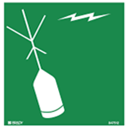
|
EPIRB (Emergency Position Indicating Radio Beacon): A satellite-based distress signaling device. |
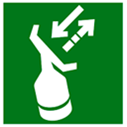
|
SART (Search and Rescue Transponder): A radar reflector that emits a distress signal. |

|
VHF (Very High Frequency) Two-way VHF radio telephone apparatus. |

